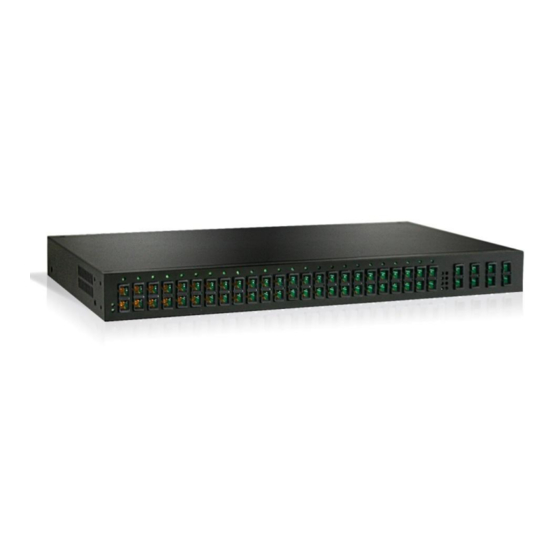
EtherWAN EX72129A Manuals
Manuals and User Guides for EtherWAN EX72129A. We have 1 EtherWAN EX72129A manual available for free PDF download: User Manual
EtherWAN EX72129A User Manual (297 pages)
EtherWAN Managed Switch
Table of Contents
-
Preface
16 -
System Menu
26-
IP Address30
-
Static IP30
-
DHCP Client30
-
DNS Server30
-
-
-
Reboot50
-
Logout50
-
Diagnostics
60-
Utilization60
-
System Log61
-
ARP Table65
-
Route Table67
-
-
Port
69-
Port Status71
-
Rate Control72
-
-
Switching
81-
Bridging81
-
Aging Time82
-
-
Storm Detect88
-
-
Poe Scheduling100
-
-
Poe Scheduling116
-
-
Trunking
119-
Overview119
-
Port Trunking120
-
LACP Trunking123
-
-
-
-
-
-
IST MAX Hops158
-
-
Advanced Setting165
-
Vlan
169 -
Qos
183-
Figure 84: DSCP191
-
-
General Overview194
-
Configuring ACL195
-
ACL Policy Map197
-
IP Access List198
-
Mac Access List201
-
Layer 4203
-
-
Enabling Qos214
-
-
-
Snmp
222 -
Ieee 802.1X
234 -
Lldp
239-
LLDP Neighbors245
-
LLDP Statistics246
-
Other Protocols
253-
Gvrp253
-
Figure 121: GVRP253
-
General Overview254
-
-
IGMP Snooping260
-
General Overview260
-
-
-
Enabling NTP278
-
-
Gmrp285
-
General Overview285
-
GMRP Normal Mode285
-
GMRP Fixed Mode285
-
-
DHCP Server292
-
Advertisement
Advertisement
